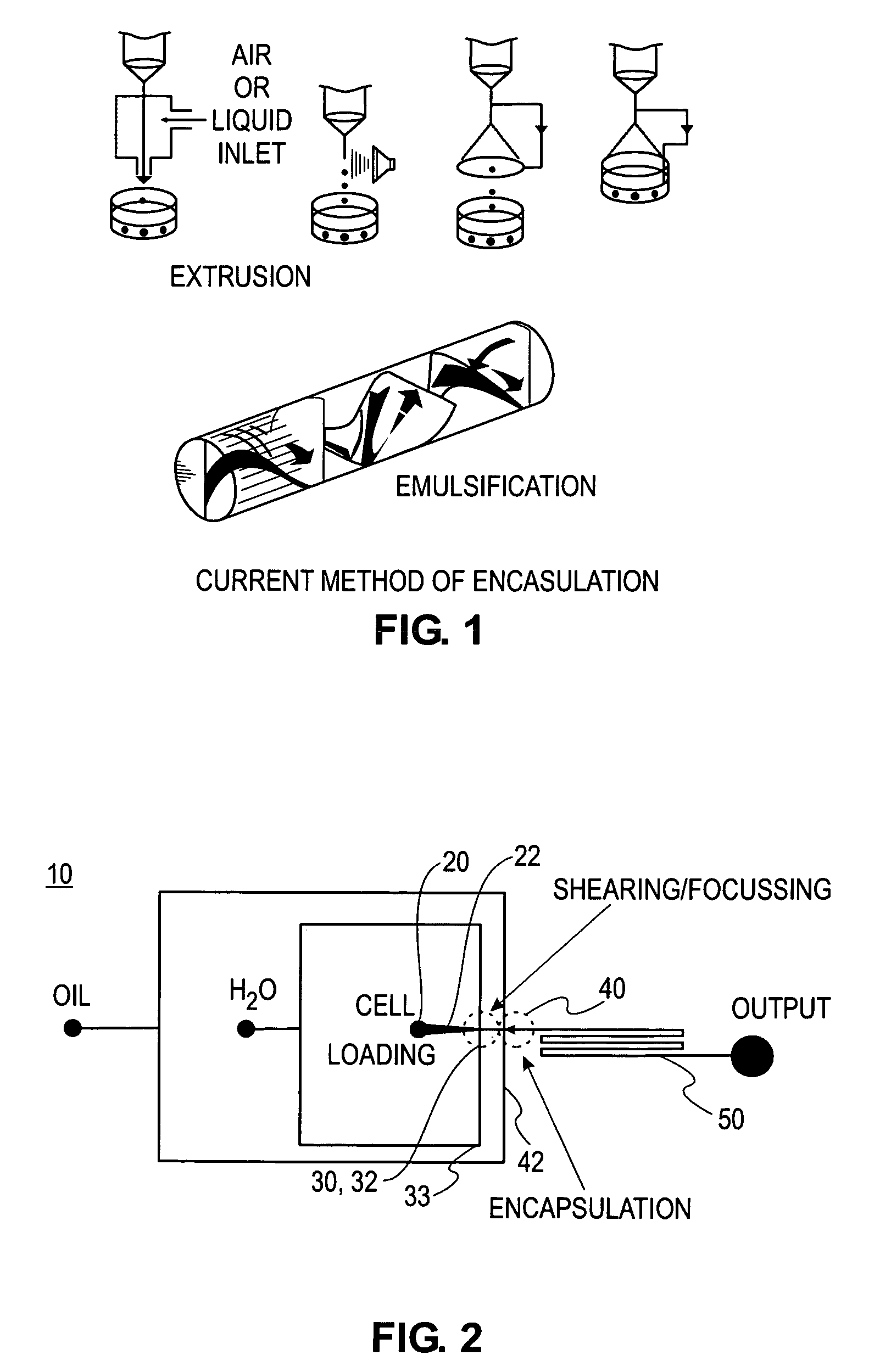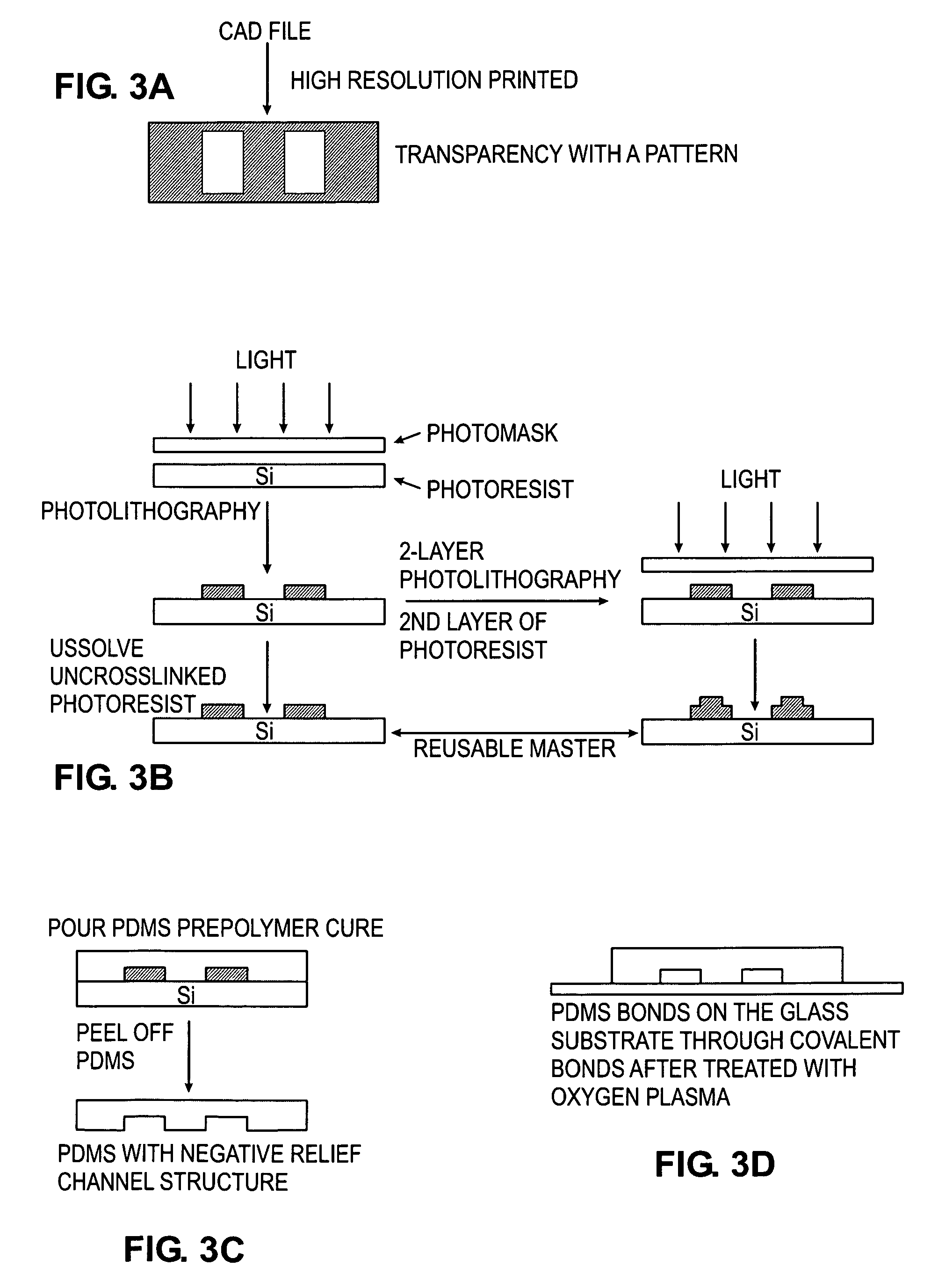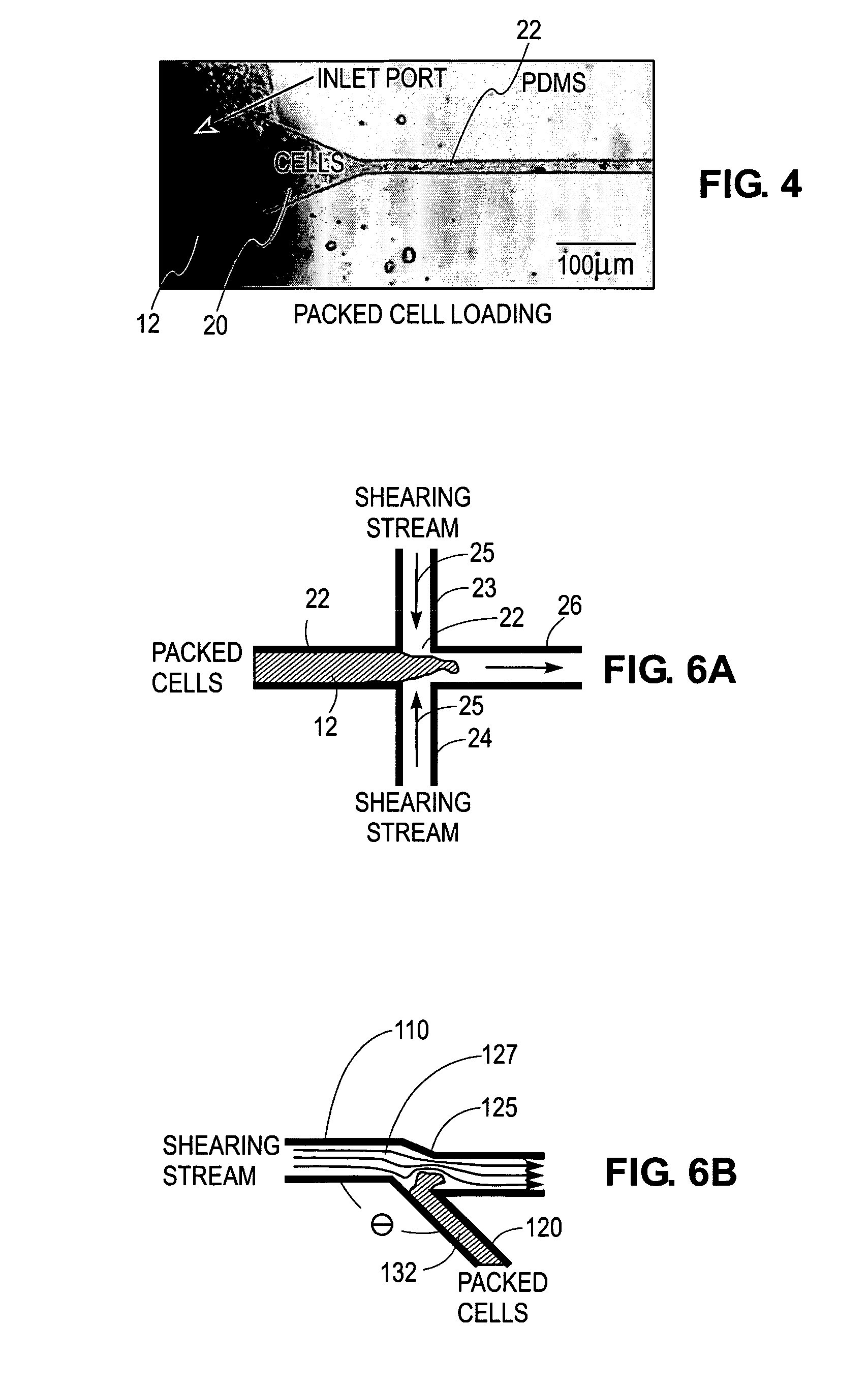Cell encapsulation microfluidic device
a microfluidic device and cell technology, applied in the field of cell encapsulation, can solve the problems of increasing the size dispersion of small droplets, inability to trap droplets before (or without) polymerization, and non-uniform polymerization times across droplet population, and achieve uniform polymerization times and small minimum droplets.
- Summary
- Abstract
- Description
- Claims
- Application Information
AI Technical Summary
Benefits of technology
Problems solved by technology
Method used
Image
Examples
Embodiment Construction
[0042]FIG. 2 is a schematic of an exemplary system for encapsulating cells in droplets. The system 10 generally includes a microfluidic device comprising a series of intersecting channels which form a cell loading region 20, a shearing region 30, a focusing region 32, an encapsulation region 40, and a serpentine output 50. As is described further below, the methods of this embodiment can be combined with further functional regions to, for example, obtain polymerized droplets, sort out empty droplets, or combinatorially add biochemical factors. In addition, methods that do not include one or more of the functional regions can also be employed.
[0043]As depicted in FIG. 3, polydimethylsiloxane (PDMS) is preferably used as a material for fabricating the microfluidic device. The PDMS used is supplied in two components, a base and a curing agent. The mixture is introduced on top of a silicon wafer formed with photosensitive polymer formed lithographically into the desired channel design. ...
PUM
| Property | Measurement | Unit |
|---|---|---|
| diameter | aaaaa | aaaaa |
| size | aaaaa | aaaaa |
| depth | aaaaa | aaaaa |
Abstract
Description
Claims
Application Information
 Login to View More
Login to View More - R&D
- Intellectual Property
- Life Sciences
- Materials
- Tech Scout
- Unparalleled Data Quality
- Higher Quality Content
- 60% Fewer Hallucinations
Browse by: Latest US Patents, China's latest patents, Technical Efficacy Thesaurus, Application Domain, Technology Topic, Popular Technical Reports.
© 2025 PatSnap. All rights reserved.Legal|Privacy policy|Modern Slavery Act Transparency Statement|Sitemap|About US| Contact US: help@patsnap.com



